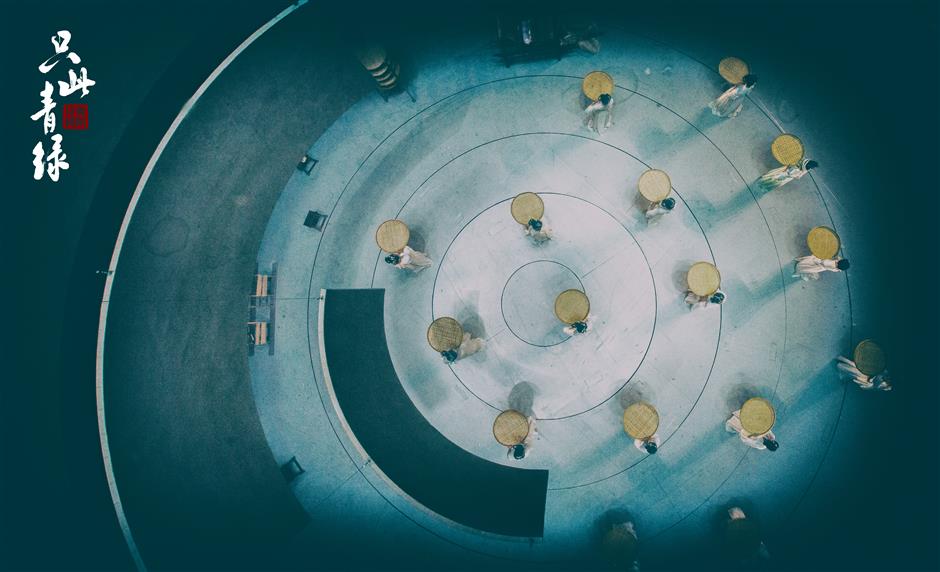Poetic dance highlights the aesthetics of traditional Chinese painting
The poetic dance, "The Painting Journey – The Legend of a Panorama of Mountains and Rivers," made its Shanghai debut at the Shanghai Grand Theater over the weekend.
The dance, highlighting the aesthetics of traditional Chinese painting, is the latest creation by Han Zhen and Zhou Liya, the joint directors and choreographers of the popular dance drama "The Eternal Wave."
Unlike Han and Zhou's previous works, "The Painting Journey," doesn't have a strong storyline, but showcases Chinese traditional culture in a poetic and respectful way.

The work highlights the aesthetics of traditional Chinese painting.
The painting, "A Panorama of Rivers and Mountains," is the only extant work by Song Dynasty (AD 960-1279) painter Wang Ximeng (1096-1119) who created it at the age of 17.
The 900-year-old masterpiece is stunning in its sweeping scale, rich coloration and the expressive minute details. On a single piece of silk, mountain formations and groupings of infinite variety rise and fall between a cloudless sky and rippling waters, extending as far as the eye can see in all directions.
The painting is a representative of "blue-green landscape." Azurite blue and malachite green dominate, with touches of pale brown.
Han and Zhou had thorough communication with experts and researchers at Beijing's Palace Museum when choreographing the work. One researcher even inspired them to set a character as a guide in the dance.

The dance showcases Chinese traditional culture in a poetic and respectful way.
When unfolding the painting inch by inch, the researcher travels back in time to watch the process the ancient painter used to painstakingly create the work, decoding the secrets behind its inherent uniqueness.
Audiences follow the researcher to explore the legendary world of traditional Chinese art.
To better demonstrate the role of painter Wang, young dancer Zhang Han spent quite some time learning traditional Chinese painting himself.
"There is very limited description about the painter in historical books," said Zhang. "I consulted experts about their impression of the painter, discussed with choreographers and tried to create the image and personality of the young painter, who was highly devoted when creating the painting."

The concentric circles-shaped stage at Shanghai Grand Theater
Zhang, who specializes in Chinese folk dance, felt pressured when playing the role of painter Wang.
"Folk dance is often joyful and outgoing," he said. "But a painter's world can be very introverted. I get emotional easily when immersing myself in this role."
The show is produced by the Palace Museum, the China Oriental Performing Arts Group and People's Daily Online.
After the performances in Shanghai, from Friday to Sunday, it will go on a national tour and visit cities such as Suzhou, Hangzhou, Qingdao, Guangzhou, Chongqing, Foshan, Harbin and Beijing.















